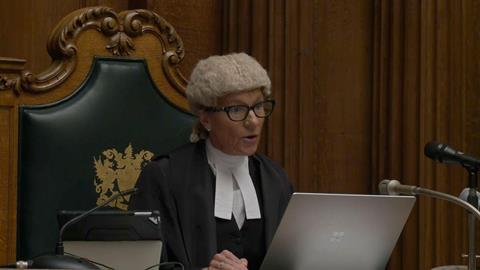The Central Criminal Court made history last month when sentencing remarks in a high-profile criminal case were broadcast for the first time in the UK. Her Honour Judge Sarah Munro QC (pictured above) sentenced Ben Oliver, 25, who pleaded guilty to the manslaughter of his grandfather.

The headline: ‘Killer who stabbed own grandfather jailed for 10 years in first ever televised court sentencing’ (The Independent).
A closer look at the context and relevant facts: Oliver had a deeply troubled childhood, he suffered from depression, had self-harmed and had autism. He had previously had a good relationship with his grandfather until he found out that his grandfather had in the past been accused of sexual abuse against girls. It is alleged that Oliver believed that his grandfather treated his grandmother badly and had engaged in extra-marital affairs. Oliver inflicted 21 stab wounds to the victim’s face and seven to the torso before telling his grandmother: ‘He cannot hurt you any more now.’
In attempting to impose a sentence that is, and is seen to be, just and fair according to the Sentencing Guidelines and other comparable cases, there are a number of complex considerations which are unique to the case, the victim and the complainant which the judge must consider. Often, that context is lost in sensationalist clickbait headlines, leaving the public confused as to how a particular sentence is just or fair.
Recognising this, and the need for more transparency in our justice system, new legislation was introduced in 2020 (and delayed by a two-year global pandemic) allowing the broadcasting of sentencing remarks in the Crown court by a senior judge (a High Court judge or a senior circuit judge) in open court. The judge must give permission in writing and the broadcast must not breach any reporting restrictions. To protect witnesses, jurors and complainants, only the judge will be visible on any broadcast. The broadcasters currently approved to film and broadcast proceedings are: BBC News, ITN, Sky News and PA Media. Sky News will host a YouTube channel for recorded hearings.
Televising high-profile court cases has been commonplace in the US for decades. Notable criminal trials include: OJ Simpson (the so-called ‘trial of the century’), Michael Jackson, Timothy McVeigh and Ted Bundy. When OJ Simpson’s famous police car chase aired on US television, Domino’s Pizza recorded their highest ever day of sales. Later, 150 million people tuned in to watch the verdict. It is clear that there is interest in these types of cases.
In the UK we have been much slower to broadcast any part of a criminal case, and even with this new development we are still a long way from the position in the US. It is worth noting that there are, of course, major differences in the US system compared with the UK. For example, in the US trial witnesses are recorded in preparation for giving evidence. There is often a rehearsal of examination and cross- examination and a review of this recording so witnesses can see their ‘performance’. In the US, lawyers often move around the courtroom presenting their case, approach the jury or make dramatic gestures to set the scene. Perhaps these elements, as well as the expectation that US trials are routinely broadcast, make witnesses both more prepared and comfortable with it.
This has been the major concern when considering broadcasting in the UK, particularly in criminal cases which often deal with difficult and sensitive topics. Former justice secretary Robert Buckland acknowledged this and said of the proposed legislation in 2020 that this would not be a ‘blind stumble’ into an ‘undesirable OJ Simpson-style scenario’ and that it was ‘about information not entertainment’. The Criminal Bar Association chair at that time, Caroline Goodwin QC, echoed the importance of restricting filming to protect ‘vulnerable witnesses, witnesses generally and defendants’.
The lord chief justice has been a huge advocate for last week’s development, describing it as a ‘very positive’ step in promoting open justice. Justice secretary Dominic Raab said: ‘Opening up the courtroom to cameras to film the sentencing of some the country’s most serious offenders will improve transparency and reinforce confidence in the justice system.’ Authorised broadcasters from Sky echoed these comments, but of course journalists have long since campaigned for more access to the courtroom.
Arguably, broadcasting criminal cases is just an extension of the open justice principle and making it directly viewable by the public reduces the ability of news organisations to ‘spin’ cases to generate headlines. It is clear that the current legislation is very specific and narrow, and only has judicial support to that extent. It requires permission for each broadcast and the Contempt of Court Act 1981 would still regulate comments or broadcasts outside of this.
The concern is whether this legislation is simply a halfway house. The media-viewing public still do not see what the judge saw and only have their interpretation of the evidence for the purpose of sentencing. However good the technology, it may be said open justice is only properly served by allowing the public to see and hear the evidence that the judge and jury did, and to be satisfied in that way that justice is being done. Does a snapshot do more damage, or is this justified as we are not yet willing to follow the US and give the full picture?
Michelle George is a senior associate at Taylor Wessing, London
































1 Reader's comment